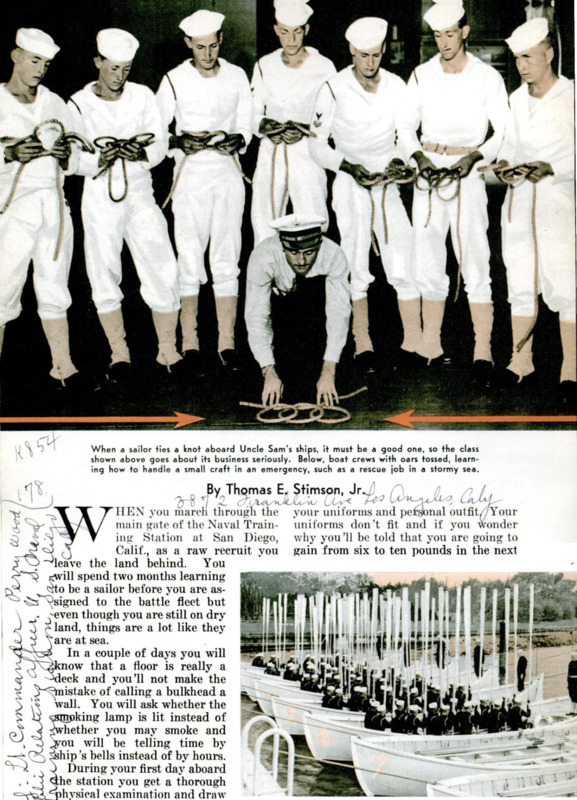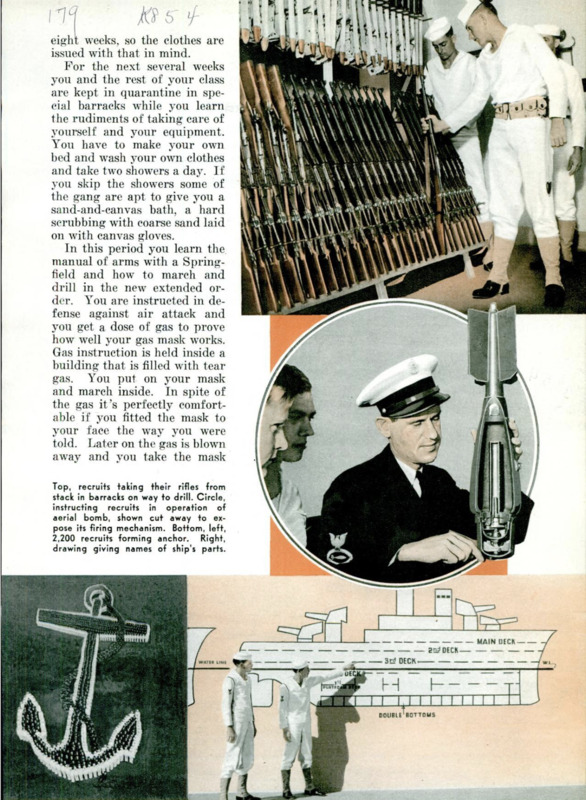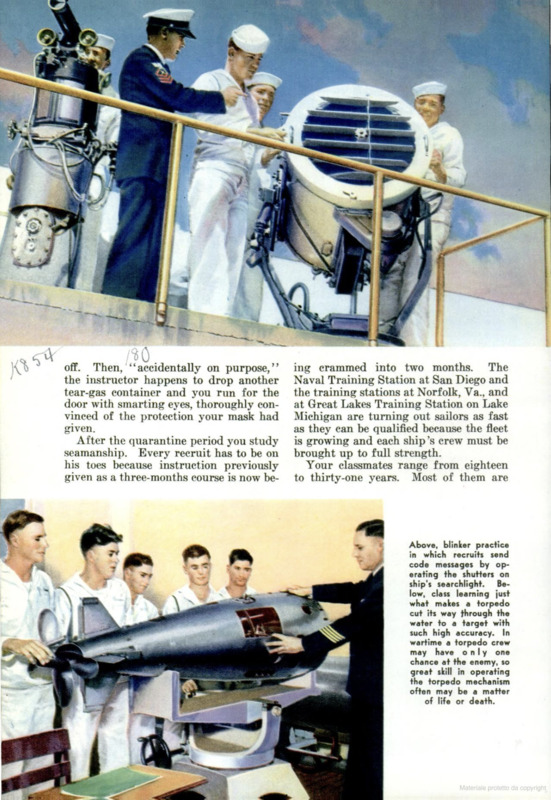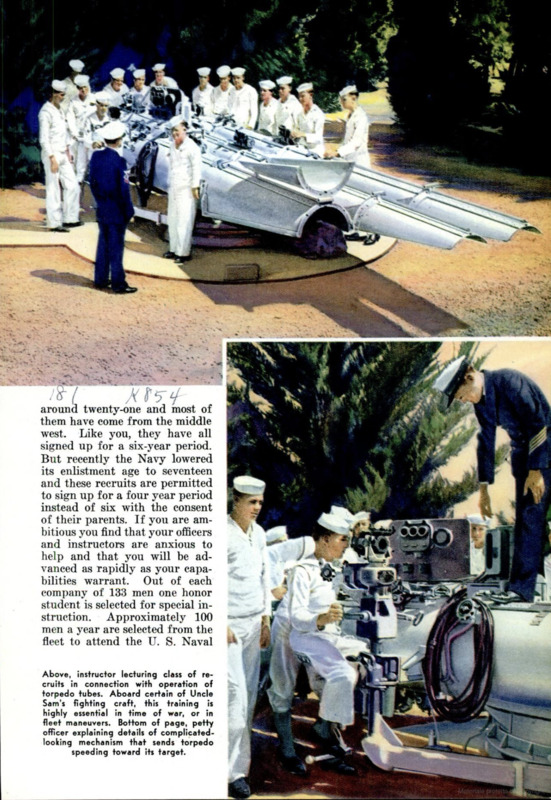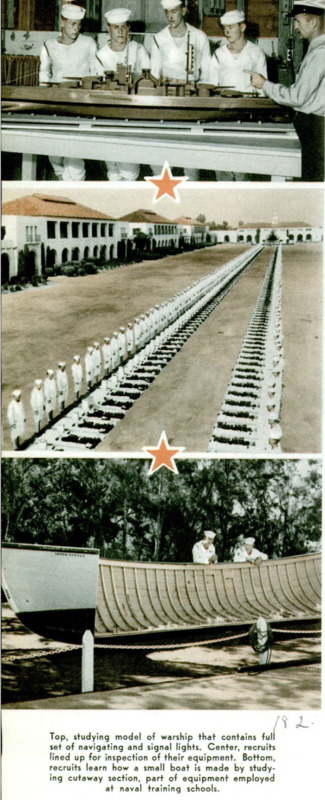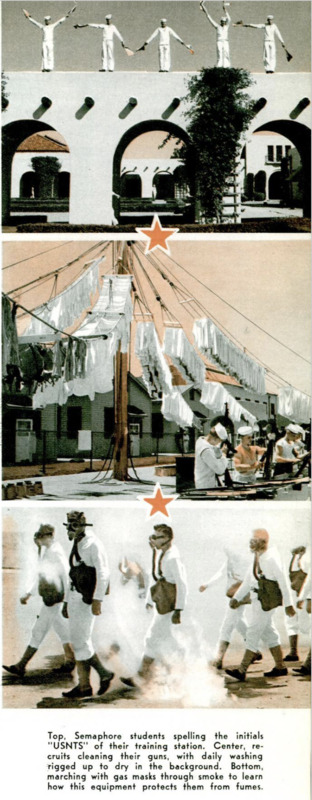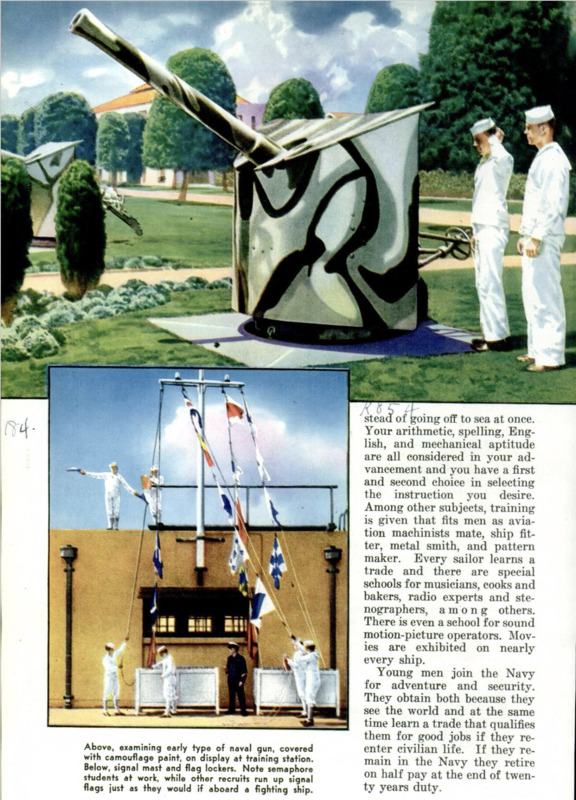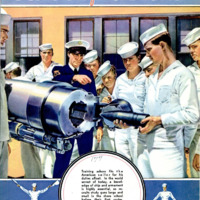Uncle Sam's School for Sailors
Item
- Title (Dublin Core)
- Uncle Sam's School for Sailors
- Article Title and/or Image Caption (Dublin Core)
- Uncle Sam's School for Sailors
- Contributor (Dublin Core)
- Thomas E. Stimson Jr. (writer)
- Language (Dublin Core)
- eng
- Temporal Coverage (Dublin Core)
- World War II
- Date Issued (Dublin Core)
- 1941-02
- Is Part Of (Dublin Core)
-
 Popular Mechanics, v. 75, n. 2, 1941
Popular Mechanics, v. 75, n. 2, 1941
- pages (Bibliographic Ontology)
- 177-184
- Rights (Dublin Core)
- Public Domain (Google digitized)
- Source (Dublin Core)
- Google books
- References (Dublin Core)
- Naval Training Center San Diego
- San Diego
- California
- M1903 Springfield
- Norfolk
- Virginia
- Great Lakes
- Lake Michigan
- United States Naval Academy
- Annapolis
- Maryland
- Uncle Sam
- Federal Bureau of Investigation
- England
- Archived by (Dublin Core)
- Enrico Saonara
- Alberto Bordignon (Supervisor)
- Spatial Coverage (Dublin Core)
- United States of America


